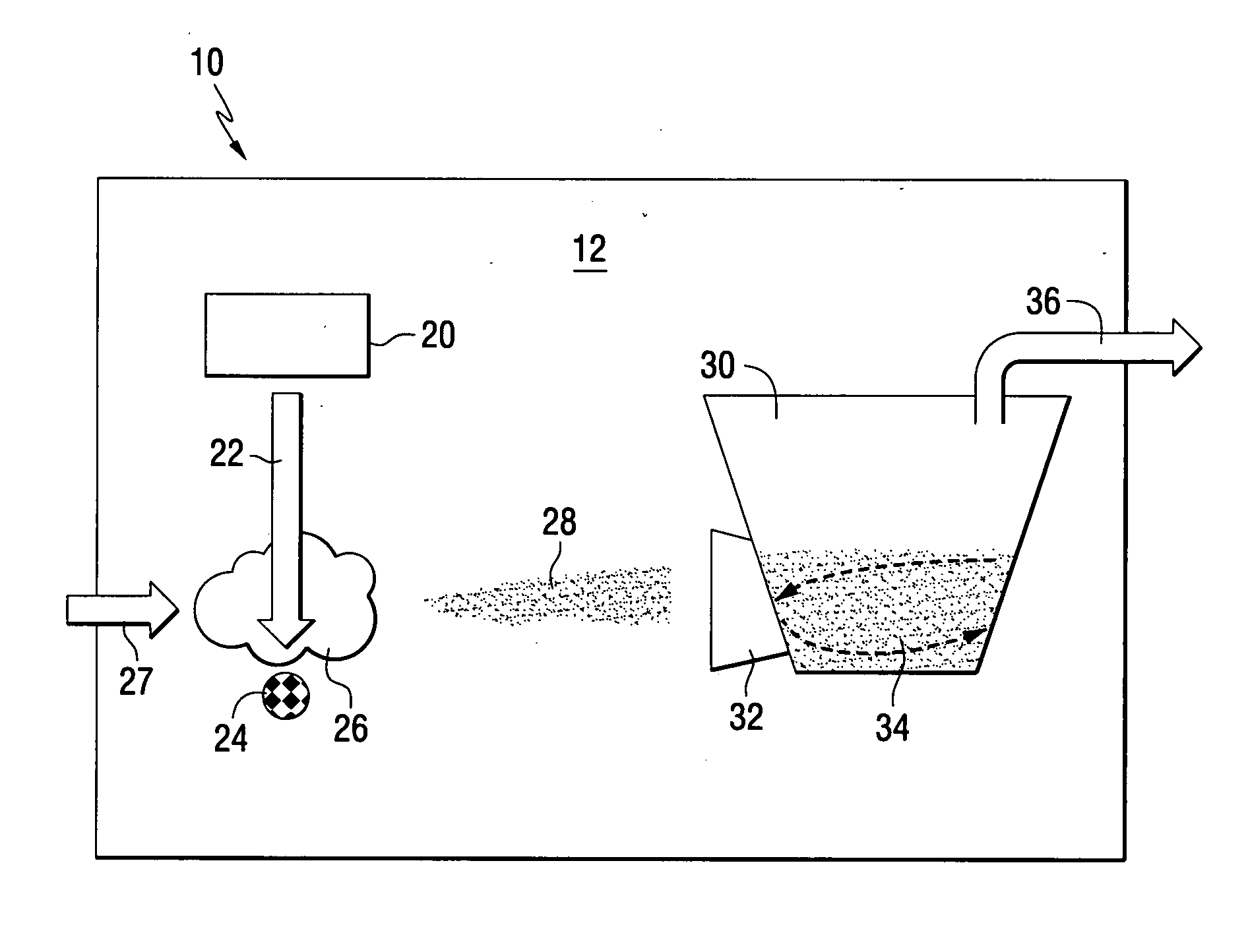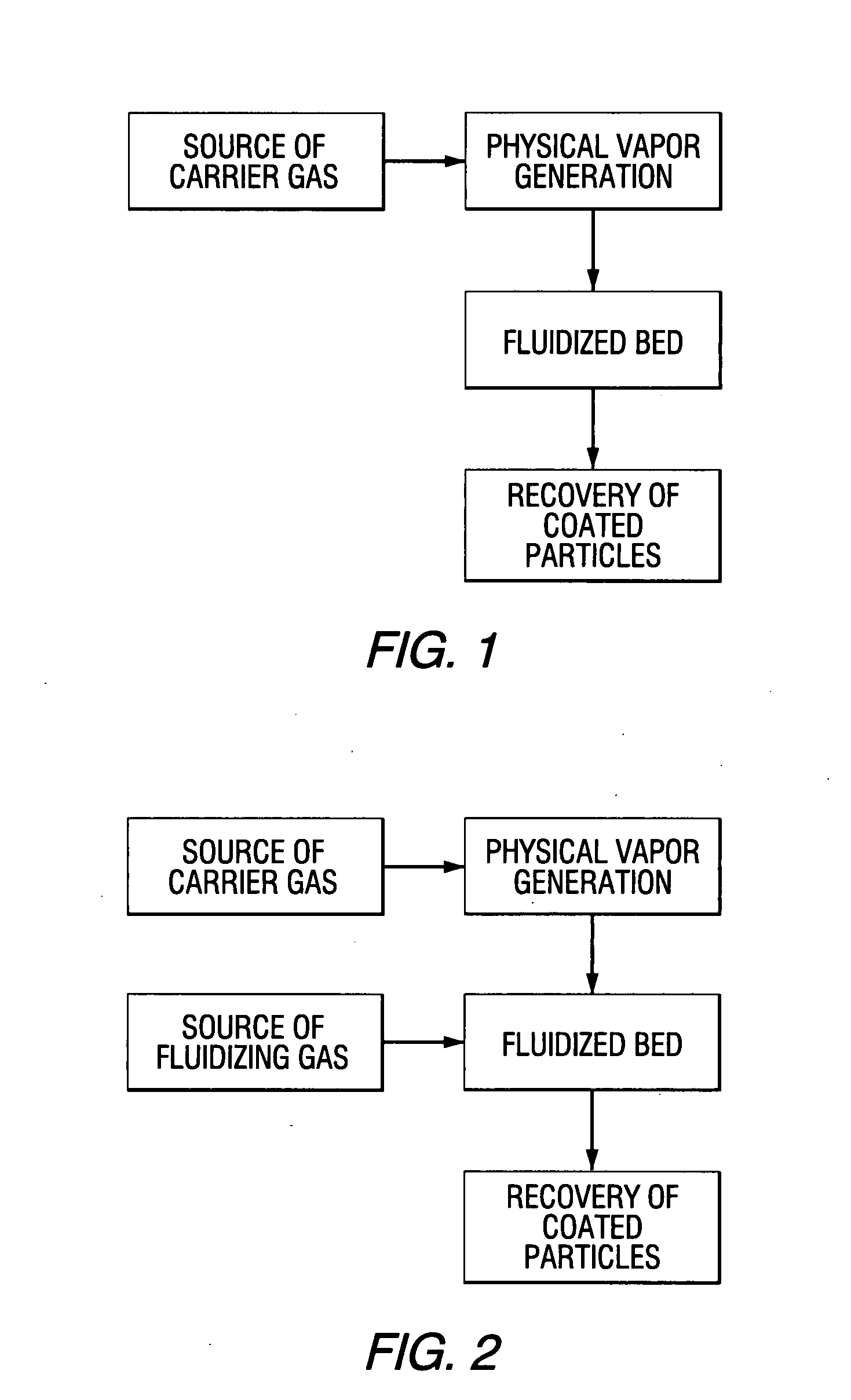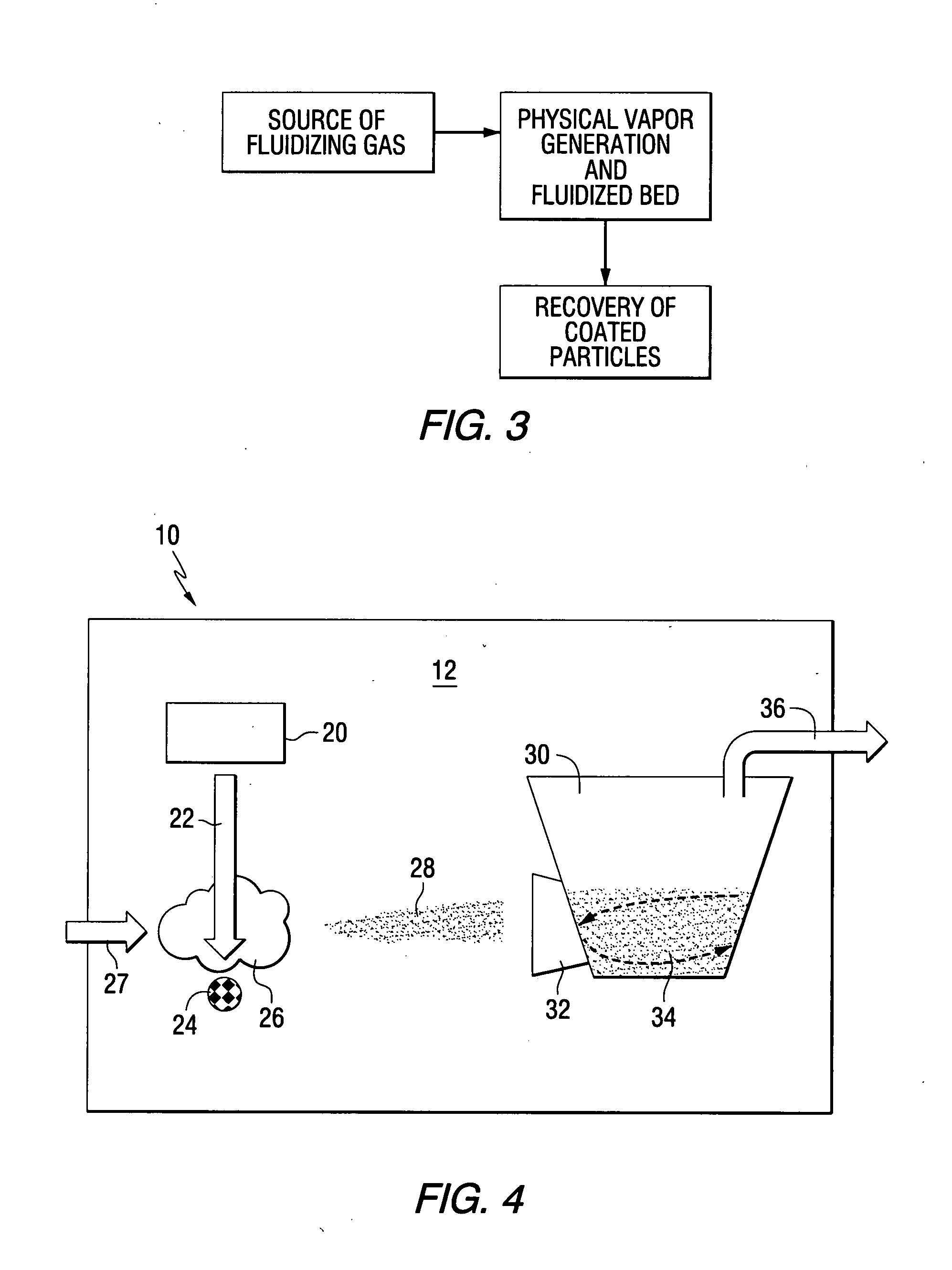Method and apparatus for coating particulates utilizing physical vapor deposition
a technology of physical vapor deposition and coating particulates, which is applied in the direction of vacuum evaporation coating, coating, granule coating, etc., can solve the problems of increasing the difficulty of coating such particulate surfaces, reducing the efficiency of pvd coating of such particulate beds, and reducing the application efficiency of coatings
- Summary
- Abstract
- Description
- Claims
- Application Information
AI Technical Summary
Benefits of technology
Problems solved by technology
Method used
Image
Examples
Embodiment Construction
[0042] In accordance with the present invention, physical vapor deposition (PVD) techniques are used for coating particulates that are suspended in a fluidizing bed by a fluidization gas. The physical vapor deposition may be directed (DVD) or non-directed. In one embodiment, combining fluidized beds with direct vapor deposition provides significant advantages in the way advanced materials such as composite powders or fibers are designed and manufactured. Using fluidization techniques, defined and repeatable coatings may be applied to particulates such as powders or chopped and milled fibers or whiskers on the particle-to-particle level.
[0043] Directed vapor deposition (DVD) may be used in combination with an electron beam-based evaporation technique to improve yield and / or quality of high performance thick and thin film coatings. The ability of DVD techniques to focus and direct the vapor cloud to a specified target space can enhance the deposition rates and material utilization ef...
PUM
| Property | Measurement | Unit |
|---|---|---|
| Temperature | aaaaa | aaaaa |
| Temperature | aaaaa | aaaaa |
| Thickness | aaaaa | aaaaa |
Abstract
Description
Claims
Application Information
 Login to View More
Login to View More - R&D
- Intellectual Property
- Life Sciences
- Materials
- Tech Scout
- Unparalleled Data Quality
- Higher Quality Content
- 60% Fewer Hallucinations
Browse by: Latest US Patents, China's latest patents, Technical Efficacy Thesaurus, Application Domain, Technology Topic, Popular Technical Reports.
© 2025 PatSnap. All rights reserved.Legal|Privacy policy|Modern Slavery Act Transparency Statement|Sitemap|About US| Contact US: help@patsnap.com



